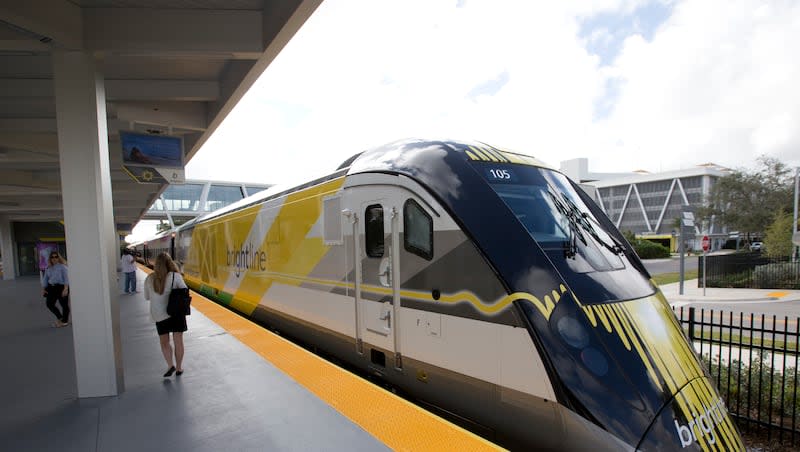Opinion: Is the future of transportation sleeper trains?

If you want a good primer on the difference between public and private business ventures, look no further than the revitalization of passenger train service in the West.
New train routes are coming, by the way. A lot of people believe markets are emerging. More importantly, people with money believe so.
Just don’t count on the railroad that’s tied to Washington to lead the way.
That would be Amtrak — the quasi-public rail service that receives a combination of state and federal subsidies. A few weeks ago, it released a new map of some proposed routes. Two of these — a Seattle to Denver and a Denver to Los Angeles route — would include major stops in Salt Lake City.
Because federal law requires Amtrak to plan routes of at least 750 miles unless states subsidize shorter routes, these new lines would compete directly with flights that could cover the same area much faster and, likely, at less cost.
No one has said yet whether trains on these routes would arrive in Salt Lake City at the unfriendly hour of 3:05 a.m., as they do now from San Francisco, or at 11:05 p.m., as they do now from Denver.
But you can guess.
Oh, and because of regulatory hurdles, the construction of these lines would take an estimated 15 years. Can you guess what transportation markets will be like in 2039? Neither can I.
But on the private-sector side, a California company called Dreamstar Lines Inc. is planning rail service between Salt Lake City and Las Vegas, continuing on to Los Angeles. It aims to have this up and running in time for the 2028 Olympics in Los Angeles. Company officials told me they also want to market travel during the 2034 Olympics, which presumably would take place in Utah.
The route would be all privately funded, and fares would be competitive with the short-haul air routes that cover the same ground.
Both the public and private sector rail officials believe there is an emerging market in a nation frustrated with long TSA lines and 18-inch airline seats on short flights. But only the private sector seems worried about profits and speed of delivery.
Dreamstar’s marketing plan is to offer overnight service between key cities using sleeper cars. And because the private sector is always looking for a competitive edge, company officials are toying with the idea of letting you load your car onto the train, as well, giving you instant transportation at your destination.
Dreamstar isn’t the only private rail line jumping on eager markets nationwide. Brightline West is planning a high-speed 200 mph rail line from Las Vegas to Los Angeles. The company already runs a service in Florida that operates between Miami and Orlando, as I reported last year.
By comparison, a publicly funded high-speed line from LA to San Francisco, approved by voters in 2008, is already billions of dollars over budget and has no estimated date of completion.
Dreamstar issued a press release on Saturday saying it has signed a memorandum of understanding with Union Pacific Railroad, which it hopes will lead to an agreement to use the railroad’s historic coast line, connecting Southern California to the Bay Area. Officials say this initial route by the company should be in service sometime next year.
The press release said the company “will feature state-of-the-art sleeping cars with private rooms, lie-flat beds, en-suite showers, high-speed internet connectivity and cutting-edge app-based arrangements for tickets, on-board food, beverage and hospitality services …”
Company CEO Joshua Dominic was quoted as saying, “By launching this service, we are not only offering a luxurious and eco-friendly travel option but also revitalizing the rich heritage of overnight rail travel in America.”
Once it’s operating, company officials believe future lines will come easier. An official told me the company isn’t worried about Amtrak. Even if those long routes across the barren West are built, they can integrate seamlessly with the private lines that focus on shorter routes.
Whether any of this happens, whether new rail lines in the West succeed, depends on you, of course. But it’s obvious a lot of folks with money think these markets have returned, and they’re eager to get going long before Amtrak can design its way out of the starting blocks.
